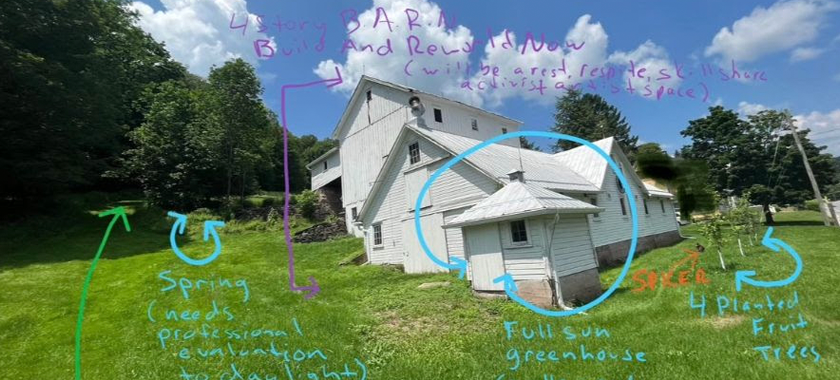
Project Expense Budgeting 102
Here, we review a handful of budget adaptations that provide extra levels of information to help you communicate the “What” and “Why” of project costs to your reader.
We recently posted an introduction to budgeting for art projects, Project Expense Budgeting 101. In this post, we discussed a few different perspectives from which people will read your budgets, and how to present financial information about your projects in commonly understood and easily adaptable formats.
Your artwork is unique, and budgets are too. They are infinitely adaptable, and like the artwork they reflect, no two are ever the same. Here, we’ll review a handful of budget adaptations that provide extra levels of information to help you communicate the “What” and “Why” of project costs to your reader.
Discipline-specific budgets.
Some arts disciplines have standardized budget formats, and you should follow the format of whatever is appropriate for your work. Music, theater, film, and photography all have budget formats that are common to their businesses. Film and television budgets are generally broken in Pre Production and Development, Production, and Post Production (and many filmmakers might add Distribution unless there is a distributor and sales agent already lined up). These production phases will have sub-categories listed by department, followed by line items.
Budgets for exhibition or touring of artwork or live performances will have different categories from budgets for creating an artwork. A project’s budget might include expenses both for creating the work as well as exhibiting or touring it. The budget for a large outdoor sculpture might include categories for Design, Studio Rental, Fabrication, and Installation. Labor, materials, and equipment will be listed as appropriate to each category.

Funders who provide their own budget forms.
Some funders will have you work with budget forms that have categories and formatting that may be much different than yours. They may use their own terminology than what is common for your discipline, and the information they request can be confusing. It is important to use the budget form provided by your funder.
When funders do have their own budget forms it is wise to create your own detailed project budget first and then work on their form. If you don’t do this you may neglect to mention whole segments of your budget. When you start with your own budget you have a total to compare to the total you arrive at when using the funder’s form. Until the two totals match you’ll know you need to keep working on it.
Deferments and in-kind contributions.
If anyone is working on a “deferred” payment basis (receiving part of their fee now and the rest after the project has generated income), including you, enter the immediate expense to the budget line in a new column BEFORE the total, titled “Deferred.” Enter what will be paid from the budget in the “Total” column.
If someone is donating goods or services, put “$0” in the “Total” column and enter the value of the goods or services in a new column following it. Title this new column “In-Kind.”
Add up the totals in the “Deferred,” and “In-Kind” columns to the budget “Total” at the bottom of the budget and include a new, separate, line that adds them together. This version of your budget will show the reader what the cost of your project would be if everyone was receiving full pay and everything needed was being paid for. The total may be much different from your cash budget, and will provide an important way to think about the true value of your project.
When you include deferments and in-kind contributions in your expense budget, you also need to include them in your Income Budget (not being discussed in this article, read our Income Budgets for Films article). This will help provide an accurate accounting of the support your project has—and how it is being paid for.
Condensing long budgets.
Large budgets for expensive projects can run on for many pages. Funders won’t want to see a detailed budget like that unless they specifically request it. Create a “top sheet” for a long budget that lists only the categories, not the line items. This brief overview can become the first page of a long budget, and you can provide only this top sheet with your funding applications and requests until you are asked for more detail.
Expenses that are to be paid for from a grant.
If you receive grants that are earmarked for specific expenses, you can note those line items on your budget. Add another column to the right of the line totals. Title this column with the name of the funder and add more columns if needed. On each line place the dollar amount that you will be accounting to the funder for.

Breaking down scripts for film, video, and theater.
Make sure that you include everything called for in the script by going through it line by line and using colored highlights to note characters, locations, props, special effects, etc., and then create lists grouped by the department that will be responsible for them so you are sure that your budget accounts for everything that’s in the script. Every time the script is revised it will probably require revisions to your budget, especially when it effects the number of days an actor works, new actors are introduced, or new locations are added.
You can find more articles on arts career topics by visiting the Business of Art section of NYFA’s website. Sign up for NYFA News and receive artist resources and upcoming events straight to your inbox.
NYFA Fiscal Sponsorship’s quarterly no-fee application deadlines are March 31, June 30, September 30, and December 31. We also accept Out-of-Cycle Review applications year-round. Reach out to us at [email protected] for more information.